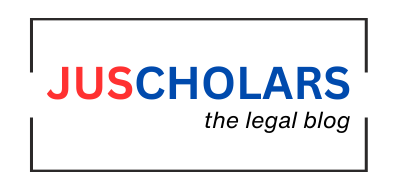The substance of the Latin legal maxim, res judicata, has ancient origins in multiple jurisprudences. Res judicata is popularly hailed as a rule of public policy but in practice protects the rights of individual litigants. The rule of res judicata, as stated in section 11 of the code of civil procedure, forbids a court from reexamining a case that has already been determined. Every contemporary legal system requires res judicata to function; without which, it would quickly fall apart. A lack of similar provisions would lead to a multiplicity of litigations and nuisance to parties. In this paper, we analyze the historical and contemporary relevance of this particular provision.
Historical Context Of Res Judicata
The principle of Res judicata is said to be as old as the law itself. It’s said to originate from three legal maxims from Roman Law. The first and most popular is “Nemodebetbisvexari pro una et eademcausa” which translates to “No one should be harassed or vexed for the same cause twice”[1]. The famous doctrine of double jeopardy also originates from this maxim. The second maxim is “Interest reipublicateut sit finis litium” which translates to “It is the state’s interest to ensure an end to litigation”. Notice how this tracks to the individual rights vs. public policy discussion we had earlier. The third maxim states “Res judicata pro veritateocipitur” which means “A judicial decision should and must be accepted as error-free and final”. While the last one may not make complete sense due to the elaborate system of appeals in place, it all boils down to the call for finality. Res judicata was also previously known as Purva Nyaya in Hindu Law. The principle was first introduced in Common law during the Duchess of Kingston case in 1776 by Chief Justice Sir William de Grey[2].
Res Judicata Before The Code Of Civil Procedure
It was then imported into Indian law by Madras Regulation II of 1802. It stated the following:-
“When a second suit may be instituted for the same cause of action, such second suit should be dismissed with costs to be paid by the Plaintiff.”
By 1850, Indian courts had started to apply this provision to include both causes of action and issues, even though it appeared to solely refer to the rule of bar by judgment[3]. This was soon changed in 1859 by the enactment of the first Civil Procedure Code. Section 2 stated the following:-
“The civil courts shall not take cognizance of any suit brought on a cause of action which shall have been heard and determined by a court of competent jurisdiction, in a former suit, between the same parties or between parties under whom they claim”.
It is clear that the 1859 Code’s Section 2 merely codified the bar by judgment component of the res judicata rule. The judiciary started to feel the loss of the other element of res judicata, bar by verdict, very soon after the code was passed[4]. After 1859, there were a number of cases where the issues had already been considered and decided by a prior court, despite the separate grounds of action. In those circumstances, they would have had to hear the identical matters again under Section 2[5]. The section was furthered re-numbered and modified multiple times before it transformed into the provision we know as of now.
Analysis Of The Current Provision
Upon examination of the explanations contained in section 11 of CPC in detail, we realize that they go in depth to explain every situation that would or could arise. As we have seen earlier, the provisions of res judicata have gone through significant changes due to a lack of clarity. Conflicting situations also arise due to the fact that the principle is very broad in its scope and nature. This is probably why the current provision goes into so much detail explaining each and every aspect of the principle. For example, let’s consider Explanation 3. Whether or not a matter is directly and substantially an issue would depend upon whether a decision on such an issue would materially affect the decision of a suit. The question thus is based on the plaint, written statement, issues, and judgment. The question should be decided on the facts of each case. Similarly, Explanation 4 is a deeming provision that states that any matter that could have been raised in the prior lawsuit as a defense or attack but wasn’t will be assumed to have been a matter that was directly and significantly in dispute in that subsequent lawsuit. This concept is also known as constructive res judicata which we will elaborate upon later in this paper.
Arithmetical Splitting
The explanations go into great detail to explain all aspects of the principle. The rule can be divided into two categories: (a) what was actually decided in the previous action, and (b) what could have been decided in the previous action. The first is relatively simple as it is a matter of fact. But it’s the second part of the rule that brings up an application of the judicial mind. Here, the courts must embark upon consideration of what constitutes ‘ the cause of action’[6]. Interestingly, although mentioned multiple times in the Code of Civil Procedure, 1908, it’s not been defined anywhere in the Act. Yet, the court must figure out whether the cause of action in the first suit is the same as the cause of action in the subsequent suit. If the answer is in the affirmative, the subsequent suit will be squashed.
At the same time, decisions that are incidental or collateral to the primary issues will not be deemed res judicata. While differentiation might be difficult, the rule of thumb is that if a matter must be decided upon in order to resolve the principal issue and if the judgment is predicated on the outcome, then it is directly and significantly in the issue. If a subject must be decided in order to award compensation to the Plaintiff and Defendant in a way that does not impact the ultimate verdict, it is considered incidentally or collaterally in issue. Since this relies heavily on the facts and circumstances of each case, no test can be applied. The crux of the issue lies in dissecting the fundamental matter that gives rise to legal action and assembling the components to construct many lawsuits[7].
Related Concepts
Res Sub Judice is also a part of the broader principle of Res judicata. It’s laid down in section 10 of the CPC. When a matter falls into the ambit of Res judicata, the court will not consider it further, but when it is said to be under Res Subjudice, it will not consider it further in relation to a lawsuit that is on hold or is still being tried. Constructive res judicata is elaborated upon in Explanation 4 of the section 11.
It basically states that when a point “might and ought” to have been raised as a defense or attack in a previous lawsuit, it is constructively in dispute. A party is bound to bring forward his whole case. While ‘ought’ forces the party to take such ground, ‘might’ assumes that the party impacted was aware of the grounds for attack.
Constructive res judicata fills legislative gaps that have been previously used with malicious intent. Without such a concept, this section would’ve been easily outmaneuvered by simply not disclosing the issues to the court the first time in order to be able to litigate in the future based on seemingly new or different facts[8]. A similar stance was taken by the court in Devilal Modi v. Sales Tax Officer[9], wherein the court recognized how a multiplicity of suits are often used to delay or postpone payment of taxes or overdues.
Right To Waive?
While there are many exceptions to Res judicata, one of the most interesting is the right to waive. In the case of P.C. Ray and Company Private Limited v. Union of India,[10] it was held that the parties may renounce the right to a claim under res judicata. This is said to be done as it’s a procedural right and hence can be waived by not claiming it. But as mentioned in several cases including the landmark judgment of Daryao, it’s also a matter of public policy. Can matters of public policy be waived?
One of the biggest reasons for the importance of the principle of Res judicata is to save precious time for the courts and taxpayer money. Can the collusion of both parties to a suit defeat these important features? This is a question left unanswered. It also points to the conflicting or hypocritical attitude of the courts towards the principle of Res judicata, especially, in the contemporary scenario of the Indian judiciary. With the widespread problem of the huge backlog of cases that have choked the Indian judiciary, maybe taking the principle of Res judicata more seriously would help alleviate the problem.
Conclusion
Despite the best attempts of the drafters to widen the scope of the application, Res judicata is a rather neglected defense[11]. It’s widely hailed as a principle of public policy for a reason. A reason Indian courts have seemed to have forgotten and reduced the substance of an age old principle into merely a procedural requirement. Res judicata forms the basis of any modern legal system and if any improvements are to be made to the rather pitiful state of the Indian Legal system, maybe true appreciation for the principle of Res judicata is the place to start. We must not forget that justice delayed is justice denied.
Author: The author of this paper is Ms. Jasmine Prakash, currently in 3rd year pursuing B.A. LL.B (Hons.) in O.P. Jindal Global University.
[1] von Moschzisker, R. (1929) ‘Res judicata’, The Yale Law Journal, 38(3), p. 299. doi:10.2307/790303.
[2] ‘Developments in the law: Res judicata’ (1952) Harvard Law Review, 65(5), p. 818. doi:10.2307/1337125.
[3] Ranjan, B. (2016) ‘A restatement of the law of res judicata in India’, SSRN Electronic Journal [Preprint]. doi:10.2139/ssrn.2810683.
[4] Chand, H. (1904) A treatise on the law of res judicata: Including the doctrines of jurisdiction, bar by suit, and Lis Pendens. London: Clowes.
[5] Ranjan, B. (2016) ‘A restatement of the law of res judicata in India’, SSRN Electronic Journal [Preprint]. doi:10.2139/ssrn.2810683.
[6] Cleary, E.W. (1948b) ‘Res judicata reexamined’, The Yale Law Journal, 57(3), p. 339. doi:10.2307/793232.
[7] Cleary, E.W. (1948b) ‘Res judicata reexamined’, The Yale Law Journal, 57(3), p. 339. doi:10.2307/793232.
[8] Amirdhavarshini, C. (2022) ‘RES JUDICATA: AN ANALYSIS’, International journal for legal research and analysis, 2(7).
[9] Devilal Modi v. Sales Tax Officer, AIR 1965 SC 1150
[10] P.C. Ray and Company Private Limited v. Union of India, AIR 1971 Cal 512.
[11] Currie, D.P. (1978) ‘Res judicata: The neglected defense’, The University of Chicago Law Review, 45(2), p. 317. doi:10.2307/1599167.







